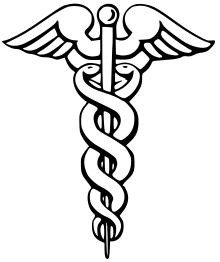Cadillac insurance plan
Informally, a Cadillac plan is any unusually expensive health insurance plan, usually arising in discussions of medical-cost control measures in the United States.[1][2][3][4] The term derives from the Cadillac automobile, which has represented American luxury goods since its introduction in 1902,[1] and as a health care metaphor dates to the 1970s.[1] The term gained popularity in the early 1990s during the debate over the Clinton health care plan of 1993,[1] and was also widespread during debate over possible excise taxes on "Cadillac" plans during the health care reforms proposed during the Obama administration.[1] (Bills proposed by Clinton and Obama did not use the term "Cadillac".)
| This article is part of a series on |
| Healthcare reform in the United States of America |
|---|
 |
|
Legislation
|
|
Reforms |
|
Systems
|
|
Third-party payment models
|
|
|
A study published in Health Affairs in December 2009 found that high-cost health plans do not provide unusually rich benefits to enrollees. The researchers found that 3.7% of the variation in the cost of family coverage in employer-sponsored health plans is attributable to differences in the actuarial value of benefits. 6.1% Of the variation is attributable to the combination of benefit design and plan type (e.g., PPO, HMO, etc.). The employer's industry and regional variations in health care costs explain part of the variation. The researchers conclude "…that analysts should not equate high-cost plans with Cadillac plans, but that in fact other factors—industry and cost of medical inputs—are as important in predicting whether a plan is a high-cost plan. Without appropriate adjustments, a simple cap may exacerbate rather than ameliorate current inequities."[5]
The Patient Protection and Affordable Care Act (PPACA, as amended by the Health Care and Education Reconciliation Act of 2010), imposes an annual 40% excise tax on plans with annual premiums exceeding $10,800 for individuals or $29,500 for a family starting in 2020, to be paid by insurers.[4][6] The tax was originally set to take effect in 2018. However, in December 2015, a law delayed the start date to 2020.[7] In January 2018, the implementation was postponed until 2022.
The tax is not imposed on the total cost of the plan, but on the costs exceeding the aforementioned values, which, after 2020, will adjust to inflation annually. These costs include any part of a person's income allocated to flexible spending accounts, health reimbursement accounts, and health savings accounts, but not expenditures for stand-alone dental, vision, accident, disability, or long-term care insurance coverage.[6][8] After the December 2015 changes, the tax is now a deductible business expense, reducing the impact on businesses that pay income tax.[9] The tax is intended to do three things: help finance the PPACA; reduce overall health care costs; and address the unequal tax benefit of excluding employer-based health insurance coverage from taxes.[10]
Although the tax plan was positioned to combat a "luxury", it will affect more employees over time. The threshold is initially indexed to Consumer Price Index (CPI), plus 1 percentage point. Starting in 2021, it is indexed to unmodified CPI. However, medical inflation is higher than general inflation. This means as healthcare costs rise, more employees' plans will be subjected to the tax.[11] It also will impact, possibly eliminate, some healthcare savings accounts, which are included in the plan cost calculation. A study from the Kaiser Family Foundation estimated 26 percent of all employers would face the tax in at least one of their plans in 2018, when the tax was then scheduled to be implemented.[12] Labor unions have also opposed this tax because it would be "very disruptive" to their healthcare plans and have asked that their members be eligible for the same federal subsidies available to low-income workers in the new health exchanges.[13]
As of 2017, there is a bipartisan effort in Congress to repeal the 40% tax--H.R. 2050 introduced by Rep. Joe Courtney (D-CT) and H.R. 879 introduced by Rep. Frank Guinta (R-NH). In addition, the Alliance to Fight the 40, a broad based coalition of public and private sector employer organizations, unions, health care companies, businesses, and other stakeholders that support employer-sponsored health coverage, is working to repeal the 40% tax.
See also
- Luxury tax
- Health care reform in the United States
References
- Beam, Christopher (October 14, 2009). "Do I have a "Cadillac Plan"? An Explainer health care FAQ". Slate. Retrieved October 15, 2009.
- Abelson, Reed (September 20, 2009). "A Tax on Cadillac Health Plans May Also Hit the Chevys". The New York Times. Retrieved October 15, 2009.
- Hit, Greg (September 26, 2009). "House Weighs 'Cadillac-Plan' Tax". The Wall Street Journal. Retrieved October 15, 2009.
- Gold, Jenny (January 15, 2010). "'Cadillac' Insurance Plans Explained". Kaiser Health News. Retrieved March 22, 2010.
- Gabel, J.; Pickreign, J.; McDevitt, R.; Briggs, T. (2009). "Taxing Cadillac Health Plans May Produce Chevy Results". Health Affairs. 29 (1): 174–181. doi:10.1377/hlthaff.2008.0430. PMID 19959542.
- "Cadillac Tax Fact Sheet" (PDF). Cigna. Retrieved November 19, 2014.
- Raaii, Sarah (December 29, 2015). "Cadillac Tax Delayed to January 1, 2020; Extension of ACA Health Plan Information Reporting Due Dates". McDermott Will & Emery.
- Milliman. "The ACA Cadillac tax: A primer for employers" (PDF). Benefit Perspectives. Milliman. Retrieved May 18, 2015.
- Greenberg, Scott (January 14, 2016). "The Cadillac Tax will Now Be Deductible. Here's What That Means". The Tax Foundation.
- Piotrowski, Julie (September 12, 2013). "Excise Tax on 'Cadillac' Plans". Health Affairs. Retrieved December 19, 2014.
- Lemieux, Jeff; Moutray, Chad (April 25, 2016). "About That Cadillac Tax". Health Affairs Blog. doi:10.1377/hblog20160425.054627 (inactive 2020-01-22).
- "Approaching health law tax is not just a levy on luxury". MPR News. Retrieved 16 November 2015.
- "White House backs off ObamaCare deal for unions". Retrieved 16 November 2015.
External links
- Understanding the Health Care Excise Tax, The Bottom Line (Committee for a Responsible Federal Budget)
- Cost of the Finance Committee Health Care Bill